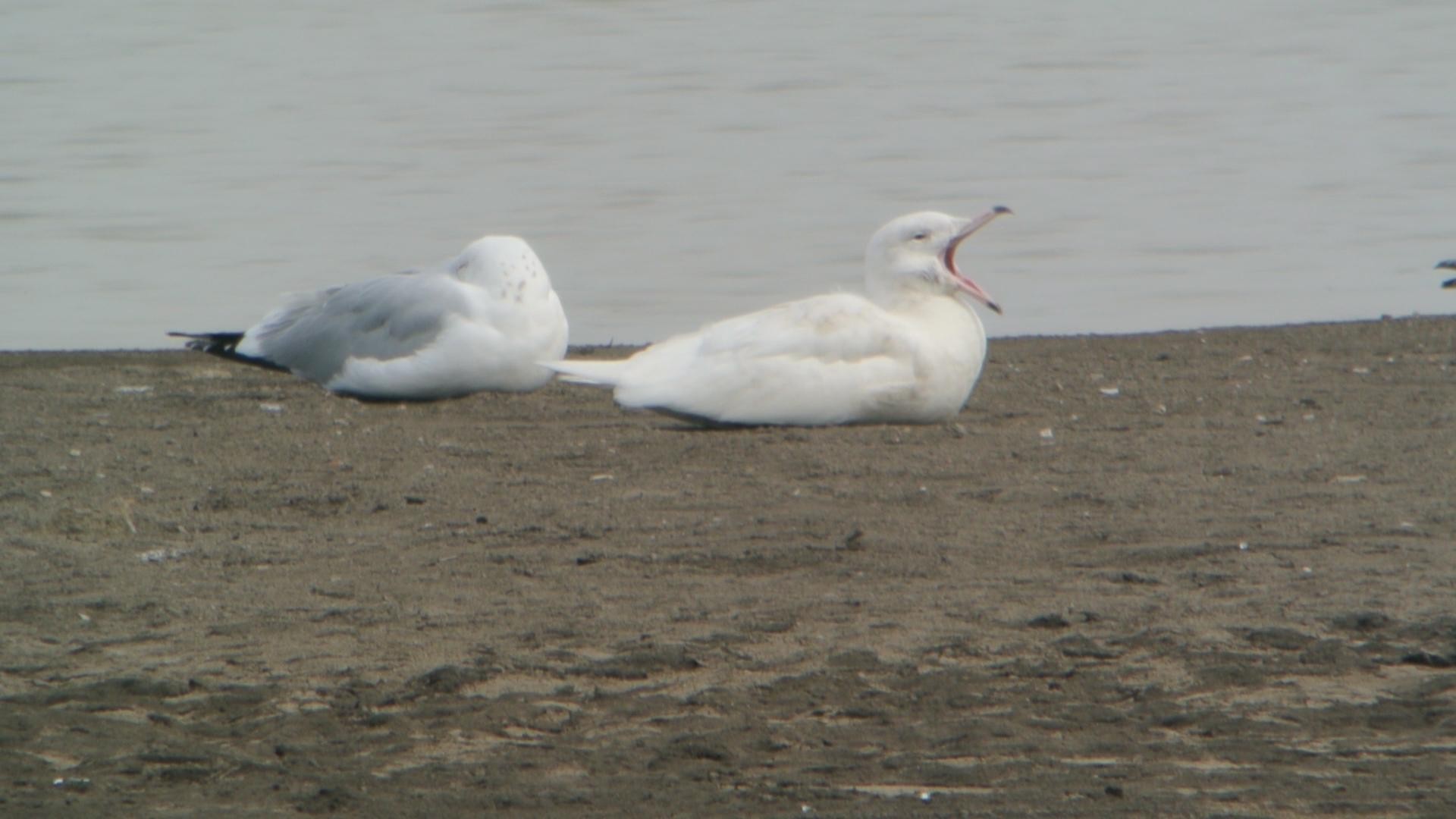Glaucous Gull
A species of Gulls Scientific name : Larus hyperboreus Genus : Gulls
Glaucous Gull, A species of Gulls
Botanical name: Larus hyperboreus
Genus: Gulls
Content
Description People often ask General Info
 Photo By Andy Reago & Chrissy McClarren , used under CC-BY-2.0 /Cropped and compressed from original
Photo By Andy Reago & Chrissy McClarren , used under CC-BY-2.0 /Cropped and compressed from original Description
This is a large and powerful gull, second-largest of all gull species and very pale in all plumage, with no black on either the wings or the tail. Adults are pale grey above, with a thick, yellow bill. Immatures are very pale grey with a pink and black bill. This species is considerably larger, bulkier, and thicker-billed than the similar Iceland gull, and can sometimes equal the size of the great black-backed gull, the oft-titled largest gull species. In some areas, glaucous gulls are about the same weight as great black-backed gulls or even heavier, and their maximum weight is greater. They can weigh from 960 to 2,700 g (2.12 to 5.95 lb), with the sexes previously reported to average 1.55 kg (3.4 lb) in males and 1.35 kg (3.0 lb) in females. At the colony on Coats Island in Canada, the gulls are nearly 15% heavier than some other known populations, with a mean weight 1.86 kg (4.1 lb) in five males and 1.49 kg (3.3 lb) in seven females. One other study claimed even higher weights for glaucous gulls, as on Wrangel Island, 9 males reportedly averaged 2.32 kg (5.1 lb) and 2.1 kg (4.6 lb) in six females, which if accurate, would make the glaucous gull the heaviest gull and shorebird in the world if not (as far as is known) the largest in length on average. These gulls range from 55 to 77 cm (22 to 30 in) in length and can span 132 to 170 cm (52 to 67 in), with some specimens possibly attaining 182 cm (72 in), across the wings. Among standard measurements, the wing chord is 40.8 to 50.1 cm (16.1 to 19.7 in), the bill is 4.9 to 6.9 cm (1.9 to 2.7 in) and the tarsus is 6 to 7.7 cm (2.4 to 3.0 in). They take four years to reach maturity. The call is a "laughing" cry similar to that of the herring gull, but deeper. 
Size
66-76 cm (26-30 in)
Life Expectancy
21 years
Nest Placement
Cliff
Clutch Size
1 - 3 eggs
Feeding Habits
Glaucous Gull are omnivorous and opportunistic, consuming marine invertebrates, fish, carrion (including polar bear kills and whale remains) and stealing prey. They exhibit varied foraging tactics, from walking along shores to dropping onto prey from flight. They aggressively compete at food sources, eat seabirds' young and eggs, follow animals for scraps, and scavenge at landfills.
Habitat
Glaucous Gull primarily inhabit coastal regions and are often found near other bird colonies. Preferring arctic or subarctic environments, they nest on sea cliffs, coastlines, and occasionally, inland tundra lakes. Their nesting grounds include elevated terrains like hummocks and pingos. Glaucous Gull forage along coasts, open waters, around sea ice, and icebergs, adapting to various winter habitats, from offshore to inland areas like agricultural fields and landfills. Attracted to human activities, they're seen near fishing vessels and places with abundant food waste.
Nest Behavior
Both glaucous Gull parents share in building the nest and continue to add materials throughout the season. They commence nesting annually, with egg-laying patterns and parental roles established for caring for the eggs and subsequent young.
Nest Characteristics
Glaucous Gull's nest is often located on high cliff ledges, grassy cliff tops, or small lake islands, away from arctic foxes. It is a shallow depression constructed by both sexes, using grass, sedges, moss, seaweed, twigs, with the occasional feather. The average nest is 18 inches wide, the inner cup 12 inches wide and 4 inches deep, and may grow larger over time.
Dite type
Omnivorous
People often ask
General Info
Feeding Habits
Bird food type
Behavior
Glaucous Gull exhibit a monogamous mating system, reuniting with the same partner at their nesting sites annually. Their courtship typically involves select 'clubs' where males gather and females choose mates through specific rituals. Although primarily solitary or forming small colonies, both sexes aggressively defend their nests and nearby foraging territories, especially from other glaucous Gull or predators. While they often feed and rest in flocks, exhibiting social tendencies, glaucous Gull can be seen contending over food sources. In winter, glaucous Gull congregate with mixed-species groups, asserting dominance except when encountering the larger Great Black-backed Gull.
Species Status
Not globally threatened.